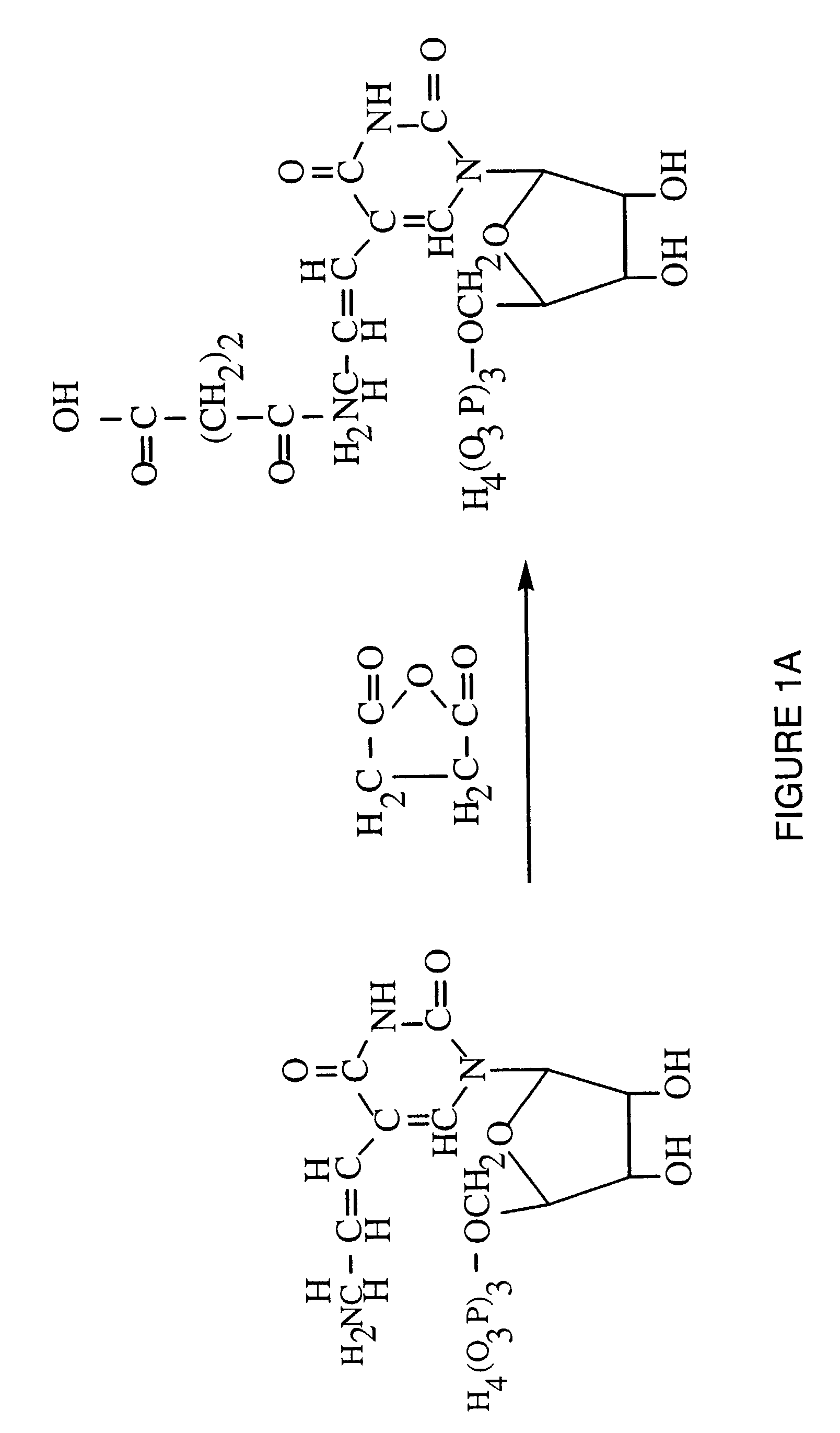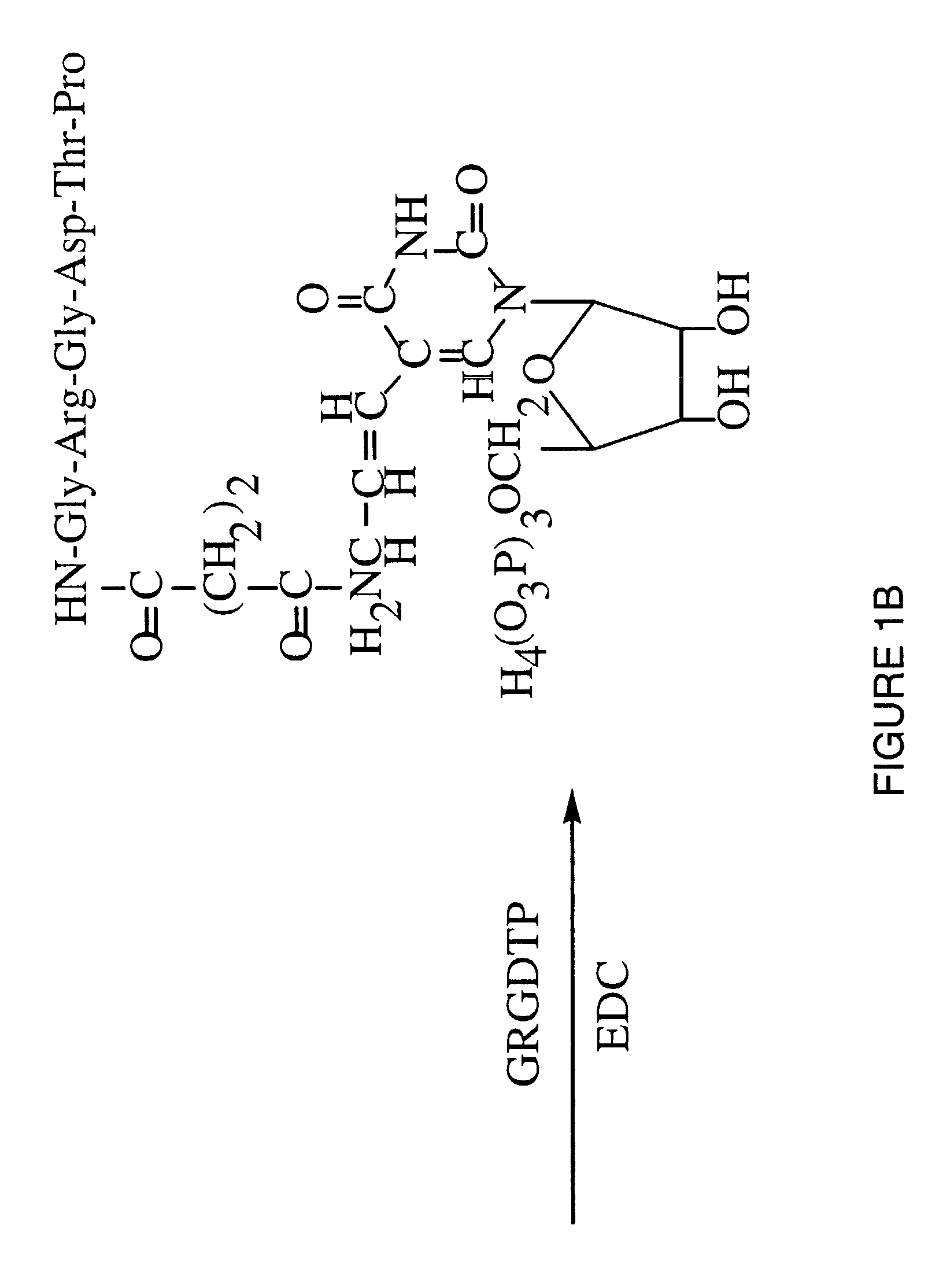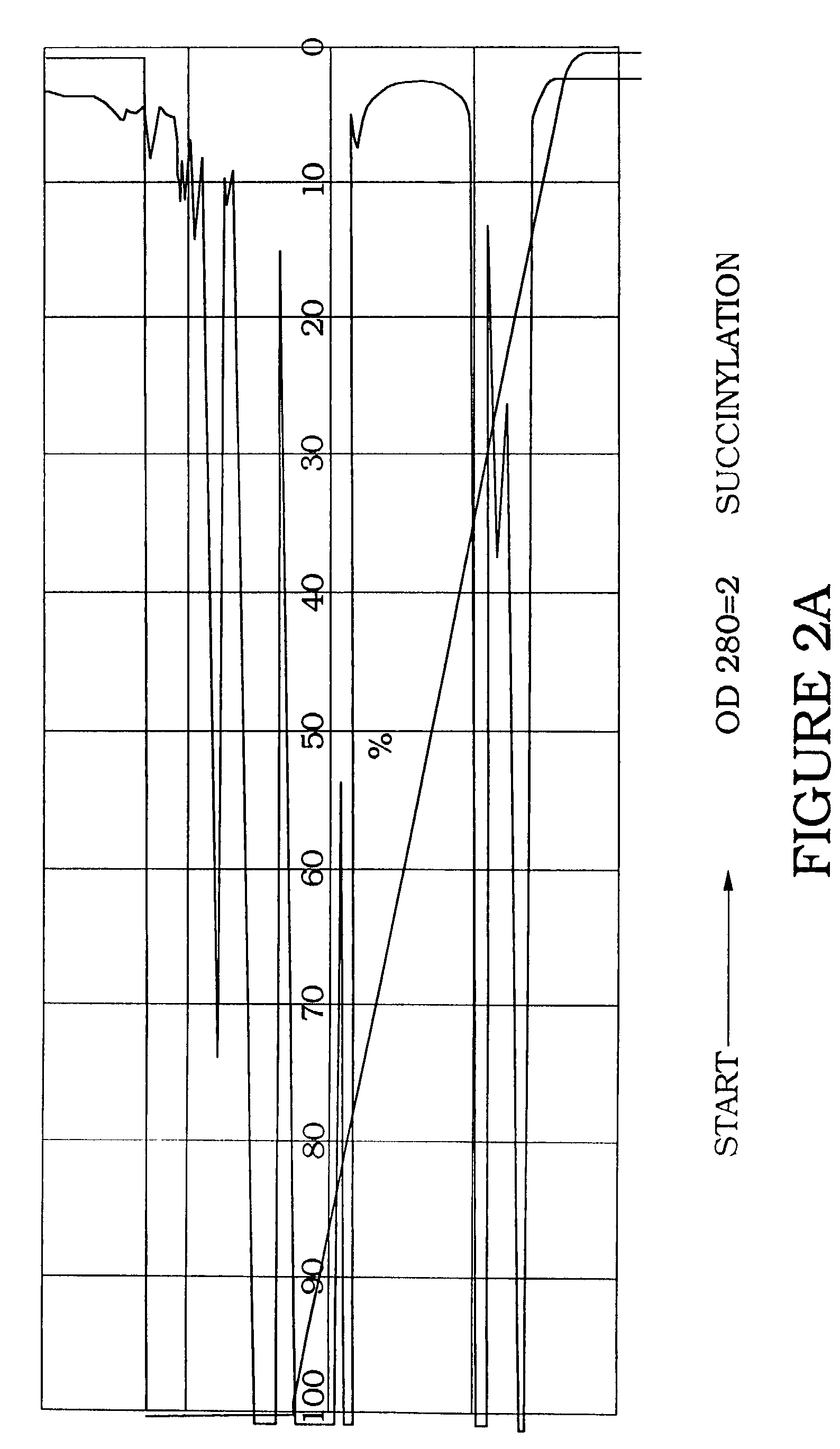Systematic evolution of ligands by exponential enrichment: blended SELEX
a technology of exponential enrichment and ligand evolution, applied in the field of systematic evolution of ligands by exponential enrichment, can solve the problems of lack of specificity, more difficult, and limited current knowledge of integrin inhibitors
- Summary
- Abstract
- Description
- Claims
- Application Information
AI Technical Summary
Benefits of technology
Problems solved by technology
Method used
Image
Examples
example 1
Synthesis of Peptide Conjugated UTP
[0063]Reagents. 5-(3-aminoallyl)-uridine 5′-triphosphate, sodium salt, was obtained from Sigma Chem. Co. (St. Louis, Mo.). Gly-Arg-Gly-Asp-Thr-Pro (SEQ ID NO:1) was obtained from GIBCO-BRL (Gaithersburg, Md.). 1-ethyl-3-(dimethylaminopropyl) carbodiimide hydrochloride (EDC) was obtained from Pierce Chemical Co. (Rockford, Ill.). Other chemicals were of highest quality available from Aldrich Chem. Co. (Milwaukee, Wis.).
[0064]Succinylation of AA-UTP. The peptide Gly-Arg-Gly-Asp-Thr-Pro (SEQ ID NO:1) was coupled to UTP via a two-step reaction through the N-terminal α-amino group of the peptide. This α-amino group is the only reactive amine in the peptide and is not required for integrin binding. Condensation with peptide carboxyl groups could function to block the aspartic acid residue, thus preventing integrin binding.
[0065]5-(3-aminoallyl)UTP (5 mg) was dissolved in 250 μl of 0.2 M sodium borate, pH 8.5. The solution was mixed with 750 μl succinic a...
example 2
Binding of RGD-RNA to gpIIbIIIa
[0071]Molecular biology techniques. Agarose electrophoresis, T7 RNA transcription, and AMV reverse transcription were performed generally as described in the SELEX Patent Applications. FPLC purification of RNA oligonucleotides was achieved using a 5×5 Mono Q anion exchange column. The RNA transcription reaction mixture was phenol:chloroform extracted, ethanol precipitated and washed, and dissolved in 50 mM sodium phosphate, 0.2 M NaCl, 6 M urea, 50% formamide (Fisher, Ultrapore, low-UV absorbance), pH 6.0. Following sample application, the column was developed with a linear gradient to 1 M NaCl. The RNA peak was precipitated by addition of 2:1 v / v ethanol, the pellet was washed with 80% ethanol and dried in a speed-vac, then dissolved in SELEX binding buffer (150 mM NaCl, 10 nM HEPES, 2 mM CaCl2, 1 mM MgCl2, 0.1% Tween, pH 7.4). RNA and RNA-gpIIbIIIa (Enzyme Research) complexes were prepared by incubation at 37° C. for 10 min, and separated by size exc...
example 3
Substrate-Coupled Selex-Derived Blended Ligands as Elastase Inhibitors
[0074]To demonstrate that a high affinity, high specificity nucleic acid ligand coupled to an inhibitor peptide is a viable method of producing a high affinity inhibitor to elastase, a ssDNA ligand to elastase was coupled to the inhibitory substrate peptide chloromethyl ketone such that the chloromethyl functionality is inactivated by creating a non-hydrolyzable linkage. ssDNA ligand 17 (DNA-17) (from U.S. Pat. No. 5,472,841, entitled, “Methods for Identifying Nucleic Acid Ligands of Human Neutrophil Elastase,” having the sequence TAGCGATACTGCGTGGGTTGGGGCGGGTAGGGCCAGCAGTCTCGTGCGGTACTT GAGCA (SEQ ID NO:3)) has a Kd for elastase of 15 nM. Because it was not known which end of DNA-17 is in close proximity to the active site of elastase, blended nucleic acid molecules were prepared in which the substrate peptide was attached to both the 3′ and 5′ ends of the DNA.
PUM
| Property | Measurement | Unit |
|---|---|---|
| Biological properties | aaaaa | aaaaa |
Abstract
Description
Claims
Application Information
 Login to View More
Login to View More - R&D
- Intellectual Property
- Life Sciences
- Materials
- Tech Scout
- Unparalleled Data Quality
- Higher Quality Content
- 60% Fewer Hallucinations
Browse by: Latest US Patents, China's latest patents, Technical Efficacy Thesaurus, Application Domain, Technology Topic, Popular Technical Reports.
© 2025 PatSnap. All rights reserved.Legal|Privacy policy|Modern Slavery Act Transparency Statement|Sitemap|About US| Contact US: help@patsnap.com



